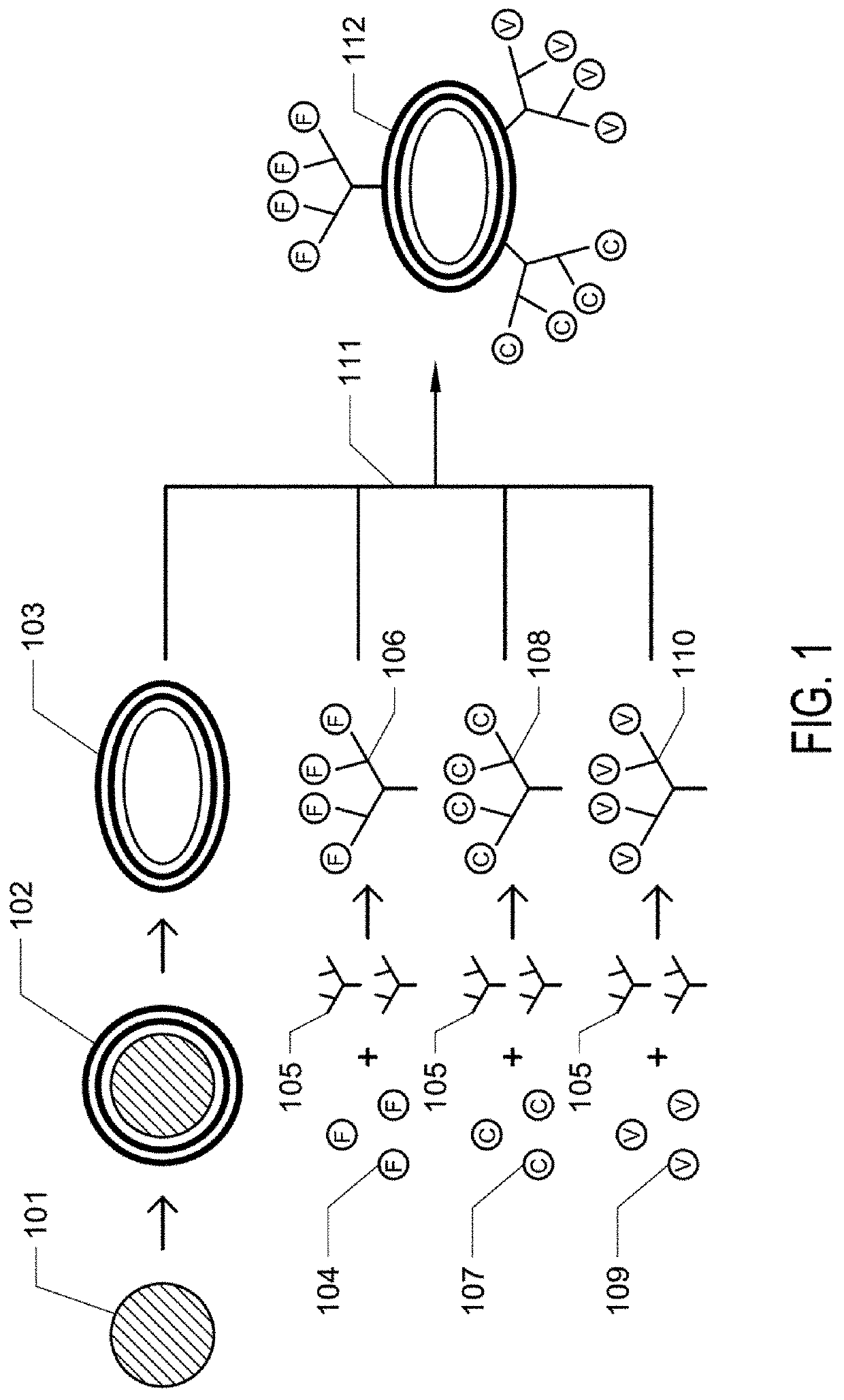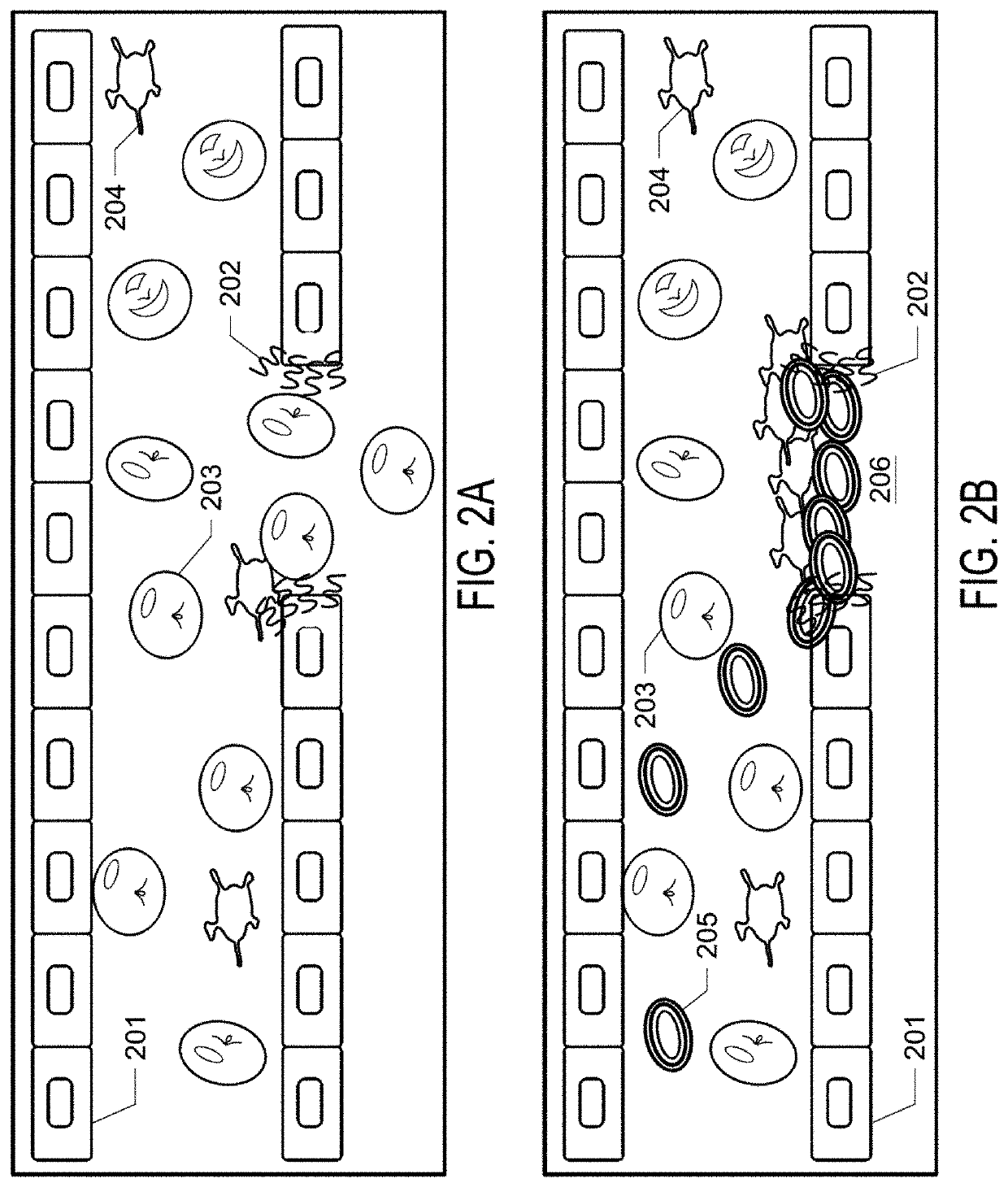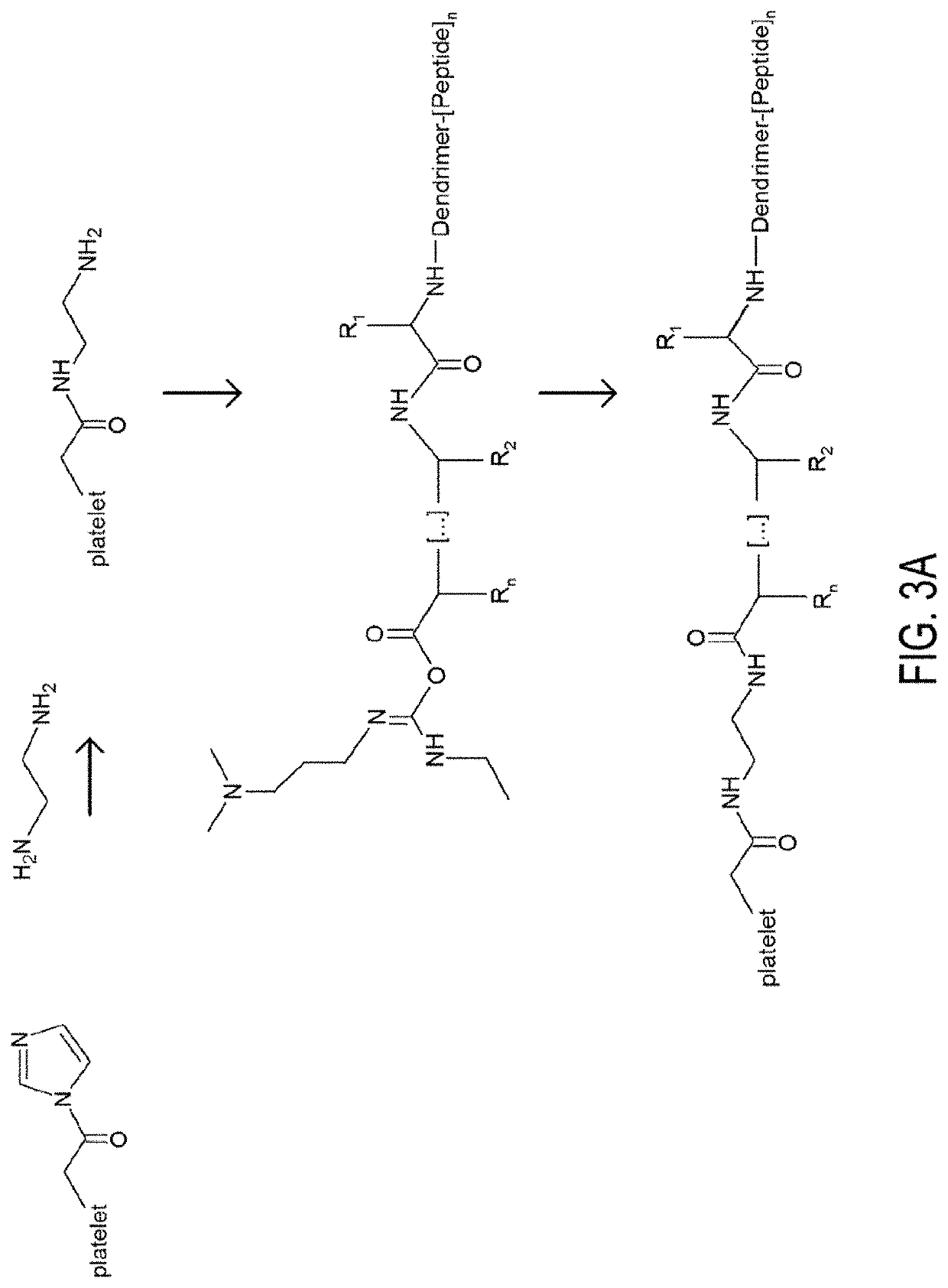Synthetic platelets
a technology of platelets and synthetic plates, applied in the field of synthetic platelets, can solve the problems of 3 million deaths worldwide, hemostatic agents are often not effective in this task, and excessive blood loss, so as to prevent or reduce blood loss, stop bleeding, and initiate clotting
- Summary
- Abstract
- Description
- Claims
- Application Information
AI Technical Summary
Benefits of technology
Problems solved by technology
Method used
Image
Examples
example 1
[0084]In this example, artificial thrombogenic platelets, referred to as SynPlats, were made and are tested in live animals.
[0085]Synthetic nanoplatelets fabrication. 200 nm carboxylate PS spheres (Polysciences, Warrington, Pa.) were suspended in 0.5 M sodium chloride (Fisher). 2 mg / ml of positively-charged Poly(allylamine) hydrochloride (Sigma) was dissolved in 0.5 M sodium chloride and incubated with 3×1012 particles at room temperature under constant rotation for 30 minutes. Particles were then centrifuged at 15000 g for 30 minutes and resuspended in 0.5 M sodium chloride. Particles were washed 2 more times at 15000 g for 30 minutes in 0.5 M sodium chloride. Following PAH coating, negatively-charged bovine serum albumin (Sigma) was coated onto of PAH layers under identical conditions. This procedure was repeated for multiple (PAH / BSA) bilayers. Intermittent crosslinking with 2% glutaraldehyde (Polysciences) for 1 hour under constant rotation was performed to ensure sufficient str...
example 2
[0100]Further described herein are hyaluronic-acid-hemostatic peptide conjugates, platelet-like nanoparticles (PLN or SynPlat), and thrombolytic particles.
[0101]Hyaluronic-acid-hemostatic peptide conjugates. In the foregoing examples, the use of hyaluronic acid as a substrate for functional moieties is described. In the following example, specific exemplary hyaluronic-acid-hemostatic peptide conjugates are provided.
[0102]Functionalized Polymers. Another implementation of the invention encompasses the use of polymers, as opposed to proteins, as the functional agent-harboring scaffold or substrate. Likewise, hybrid substrates comprising bilayers of protein and polymeric material may be employed as the substrate. It will be understood that the methods of functionalizing shells and utilizing functionalized shells described herein are equally applicable to functionalized particles wherein a polymeric material not configured as a shell replaces the shell as the substrate for functional mo...
example 3
Hyaluronic Acid-Hemostatic Peptide Conjugates
[0105]Materials. Hyaluronic acid (HA, 250 kDa) was obtained from Creative PEGWorks. Peptides including the collagen-binding peptide (CBP; [GPO]7) (SEQ ID NO: 1), the von Willebrand Factor binding peptide (VBP; TRYLRIHPQSQVHQI (SEQ ID NO: 7)) and the linear fibrinogen-mimetic peptide (FMP; KRGDW (SEQ ID NO: 8)) were obtained from GenScript USA, Inc. Alexa Fluor® 647 was obtained from Thermo Fisher Scientific. All other chemicals were reagent grade and obtained from Sigma Aldrich.
[0106]Synthesis of HA / FMP / VBP / CBP / Alexa Fluor® 647. Sodium hyaluronate (250kDa) was dissolved in 1:1 milli-Q water:DMSO (7.5 mg / mL) by constant stirring for 1 h at room temperature. Sulfo-NHS (N-hydroxysulfosuccinimide, 2× molar excess of total amount of FMP, VBP, CBP and Alexa Fluor® 647) was dissolved into milli-Q Water (150 mg / mL) and EDC·HCl (N′-ethylcarbodiimide hydrochloride, 2× molar excess of total amount of FMP, VBP, CBP and Alexa Fluor® 647) was dissolved...
PUM
| Property | Measurement | Unit |
|---|---|---|
| mol % | aaaaa | aaaaa |
| diameter | aaaaa | aaaaa |
| size | aaaaa | aaaaa |
Abstract
Description
Claims
Application Information
 Login to View More
Login to View More - R&D
- Intellectual Property
- Life Sciences
- Materials
- Tech Scout
- Unparalleled Data Quality
- Higher Quality Content
- 60% Fewer Hallucinations
Browse by: Latest US Patents, China's latest patents, Technical Efficacy Thesaurus, Application Domain, Technology Topic, Popular Technical Reports.
© 2025 PatSnap. All rights reserved.Legal|Privacy policy|Modern Slavery Act Transparency Statement|Sitemap|About US| Contact US: help@patsnap.com



